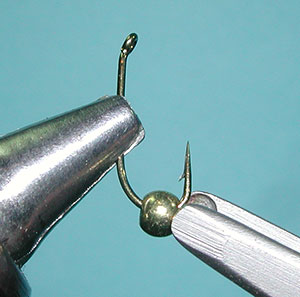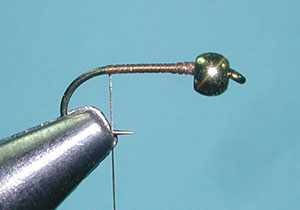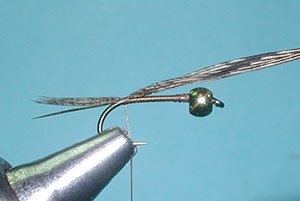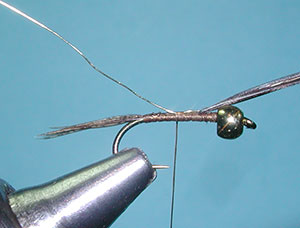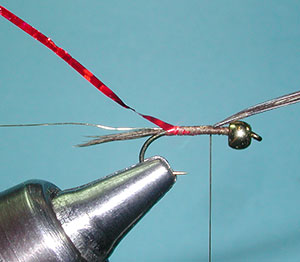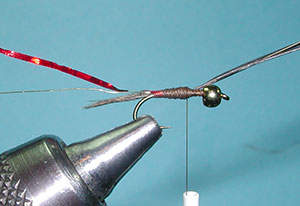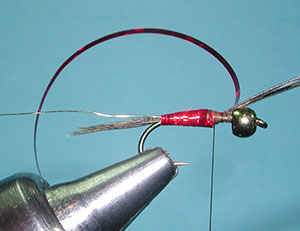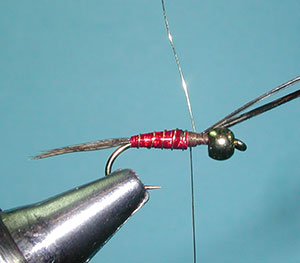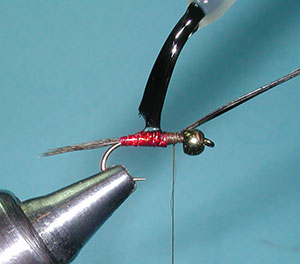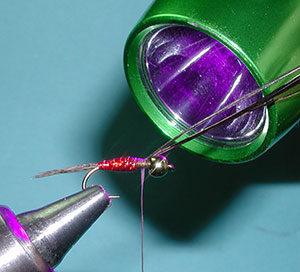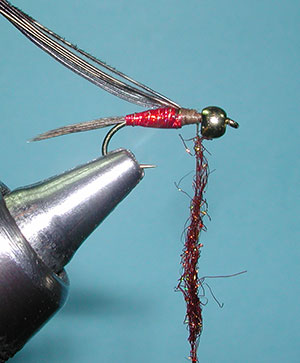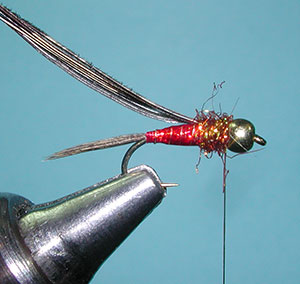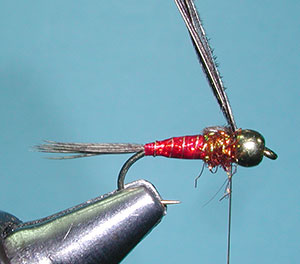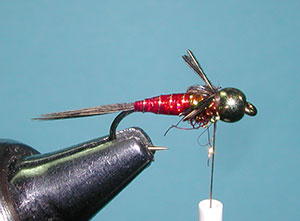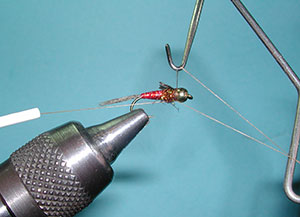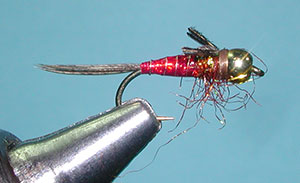Maholo Nymph – a thank you to the fish gods
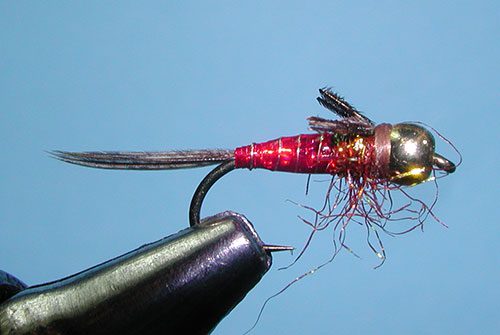
Maholo Nymph, Red
Tying Instructions
| Materials
to Order Material, click the link |
|
|---|---|
| Hook | TMC 3761 #10-14 |
| Thread | Veevus Brown 8/0 |
| Head | Gold Tungsten Bead |
| Thorax | Pheasant Tail Ice Dubbing |
| Body | Veevus Red Holotinsel |
| Tail | Pheasant Tail Fibers |
| Wingcase | Pheasant Tail Fibers |
| Legs | Pheasant Tail Fibers |
| Ribbing | Gold Wire, extra small |
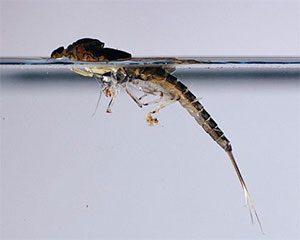
Maholo Nymph
The original Maholo Nymph was designed by Rob Anderson when he was employed by theReno Fly Shop. The name comes from a cross between theHawaiianword for “thank you” and the Holographic tinsel used for the body of the fly. It’s a variation off the Pheasant Tail Nymph and uses holographic tinsel similar to the pearlescent mylar on theLightning Bugfor the abdomen.
The pattern has an amusing background since Andy Burk was present when Rob created this pattern. New materials came to the shop and the tyers explored how these new materials could be used. Rob came up with the idea of substituting the Pheasant Tail fibers with this new holographic material on a typical Pheasant Tail Nymph. The pattern worked wonders on Pyramid Lake. Rob asked Andy what name should be given to this pattern and Andy replied, “gimme a minute”. After some thought, Andy recalled how the pattern was so effective on Pyramid Lake that when the indicator went down, you instinctively want to give a “thank you” to the fish gods. Thus “Maholo” was born.
Fishing Nymphs with an Indicator
There are many ways to fish these flies but two ways stand out and are most commonly used: With or Without an Indicator
Using an indicator on a floating line with two flies is without a doubt the most common way anglers fish nymphs and midges at Pyramid Lake. There are many variations of how to put this rig together. The basics to get you started are touse a big indicator, one that you can see and that will hold up your flies in windy, wavy conditions. A 2x-3xleader that is long enough to hang your bottom fly right off the bottom (this willvary based on the depth of water you are fishing).
Make a cast out 20-40 feet in front of you and let the rig drift in the current and wind. Some important tips are: Use flies with some weight in them to keep them down (see flies), if you are using 2 flies tie them on at least 2 feet apart or even more for deeper locations and the bottom fly should hang as close to the bottom as possible without dragging. To check your depth use a pair of hemostats clamped to your bottom fly or two large split shot big enough to sink your indicator. Toss or cast out your line and see where your indicator ends up. Ideally it should sink down between 1 and two feet under the surface for correct depth.
Fishing Nymphs without an Indicator
This method became popular by local area guide Rob Anderson, Some anglers would rather use their hands more while they are fishing as opposed to staring at a bobber all day. For this rig, start with a long 2x-3x leader 9-16 feet in length tied on a floating line or even better the new Rio Hover line. This line will deep your line from getting blown sideways in the wind. It is an excellent line for lots of our area stillwaters.
Tie on two nymphs 3 feet apart. You can do this method with one fly but a second fly will really help to get your flies to the bottom. Make a long cast and let your flies sink all the way to the bottom. Retrieve your flies slowly to keep them on or near the bottom. Fish them all the way back to your leader just like you would with a shooting head.
Variations
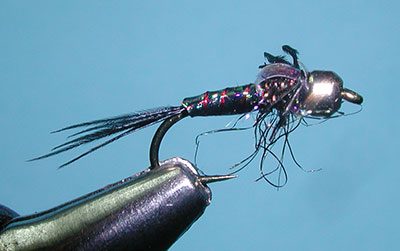
Maholo Black
| Hook | TMC 3761 #10-14 |
| Thread | Veevus Brown 8/0 |
| Head | Gold Tungsten Bead |
| Thorax | Pheasant Tail Ice Dubbing |
| Body | Veevus Red Holotinsel |
| Tail | Pheasant Tail Fibers |
| Wingcase | Pheasant Tail Fibers |
| Legs | Pheasant Tail Fibers |
| Ribbing | Gold Wire, extra small |
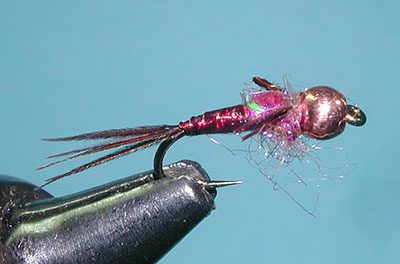
Maholo Wine
| Hook | TMC 3761 #10-14 |
| Thread | Veevus Brown 8/0 |
| Head | Gold Tungsten Bead |
| Thorax | Pheasant Tail Ice Dubbing |
| Body | Veevus Red Holotinsel |
| Tail | Pheasant Tail Fibers |
| Wingcase | Pheasant Tail Fibers |
| Legs | Pheasant Tail Fibers |
| Ribbing | Gold Wire, extra small |

